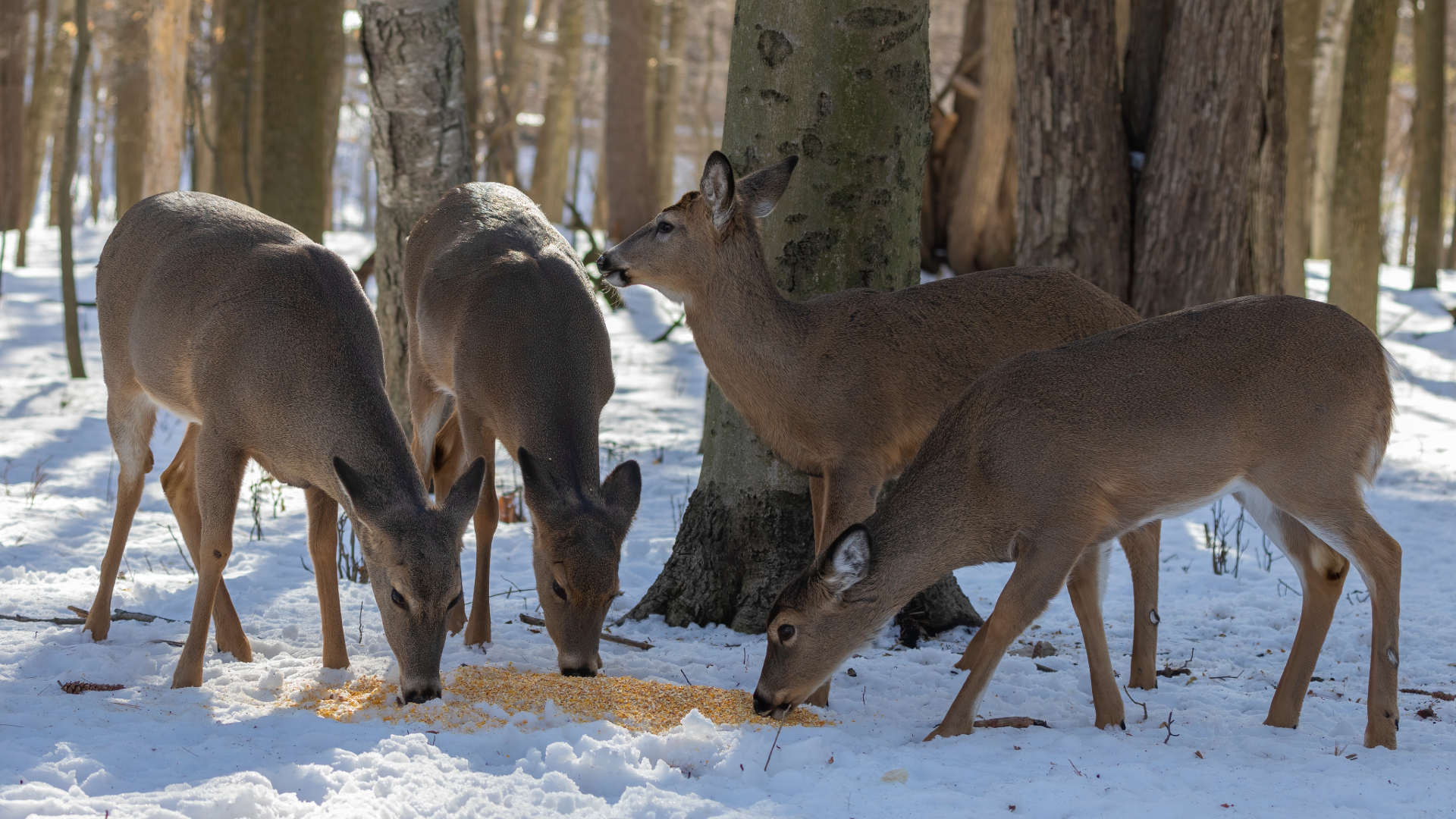AFM NEWS
Pros and Cons of Baiting Whitetail Deer with Corn

Below we break down the pros and cons of baiting whitetail deer with corn so you can make an informed decision.
Pros of Baiting Whitetail Deer with Corn
- Effective Whitetail Attractant – Corn has a sweet smell, high energy content, and long-lasting appeal, making it one of the most reliable ways to bring deer within range. Both cob corn and shelled corn are easy for deer to find and eat.
- Affordable and Accessible – Corn is widely available at feed stores, farm supply outlets, and even local hardware stores, making it one of the cheapest deer baiting options.
- Great for Scouting and Trail Camera Use – Corn piles or feeders create predictable spots for deer movement, making it easier to set up trail cameras and monitor buck activity, herd size, and patterns.
- Keeps Deer on Your Land – In competitive hunting areas, providing a consistent food source can help hold deer on your property instead of losing them to neighboring hunters.
Cons of Baiting Whitetail Deer with Corn
- Legal Restrictions Vary by State – Not all states allow baiting whitetail deer. Some areas prohibit it completely, while others allow it with strict limits. Always check your local hunting regulations before using corn for deer baiting.
- Can Alter Deer Behavior – Overuse of corn piles may cause mature bucks to become more nocturnal, showing up only at night when pressure is high.
- Low Nutritional Value – While corn is a great energy source, it is low in protein and minerals. Deer cannot thrive long-term on corn alone, and in some cases, sudden large quantities may even cause digestive problems.
- Attracts Other Wildlife – Corn doesn’t just draw whitetail deer. Raccoons, wild hogs, turkeys, and even bears may show up at bait sites, sometimes consuming more corn than the deer themselves.
Cob Corn vs. Shelled Corn for Deer Hunting
Hunters often ask which is better: cob corn or shelled corn. The truth is, both work, but each has its benefits:
- Cob corn lasts longer on the ground and forces deer to spend more time at the bait site, giving hunters better shot opportunities.
- Shelled corn is easier to spread and use in feeders, but it can be eaten up more quickly by deer and non-target animals.
Final Thoughts on Baiting Whitetail Deer with Corn
Baiting whitetail deer with corn can be a highly effective hunting tactic, but it isn’t without drawbacks. If it’s legal where you hunt, using corn strategically—paired with natural food plots, habitat management, and smart stand placement—can boost your chances of success. Understanding the pros and cons of deer baiting will help you decide if cob corn, shelled corn, or a mix of both fits best into your overall deer hunting strategy.
